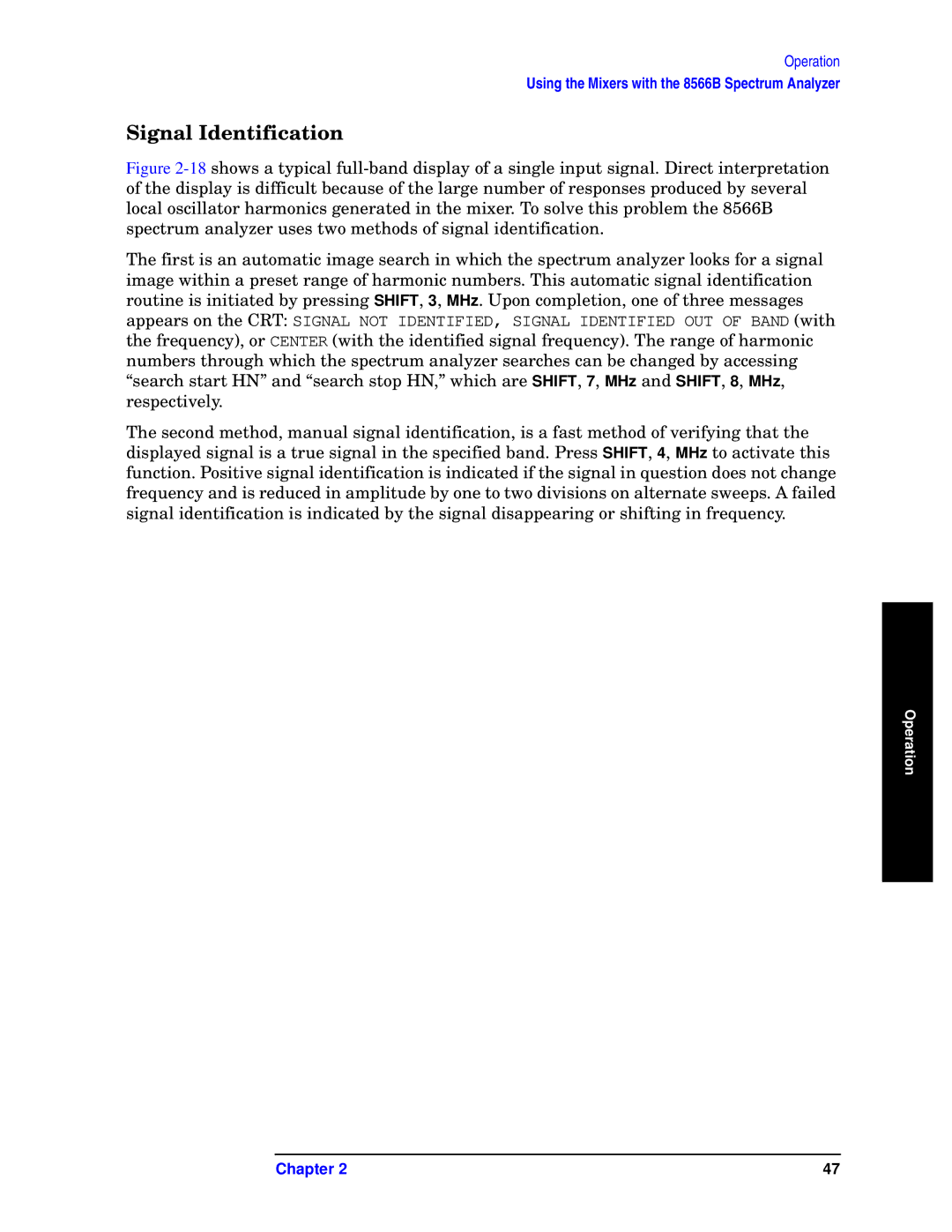
Operation
Using the Mixers with the 8566B Spectrum Analyzer
Signal Identification
Figure 2-18 shows a typical full-band display of a single input signal. Direct interpretation of the display is difficult because of the large number of responses produced by several local oscillator harmonics generated in the mixer. To solve this problem the 8566B spectrum analyzer uses two methods of signal identification.
The first is an automatic image search in which the spectrum analyzer looks for a signal image within a preset range of harmonic numbers. This automatic signal identification routine is initiated by pressing SHIFT, 3, MHz. Upon completion, one of three messages appears on the CRT: SIGNAL NOT IDENTIFIED, SIGNAL IDENTIFIED OUT OF BAND (with the frequency), or CENTER (with the identified signal frequency). The range of harmonic numbers through which the spectrum analyzer searches can be changed by accessing “search start HN” and “search stop HN,” which are SHIFT, 7, MHz and SHIFT, 8, MHz, respectively.
The second method, manual signal identification, is a fast method of verifying that the displayed signal is a true signal in the specified band. Press SHIFT, 4, MHz to activate this function. Positive signal identification is indicated if the signal in question does not change frequency and is reduced in amplitude by one to two divisions on alternate sweeps. A failed signal identification is indicated by the signal disappearing or shifting in frequency.
Operation
Chapter 2 | 47 |
